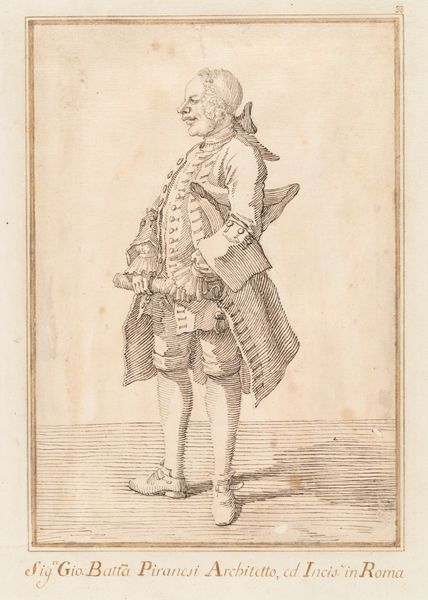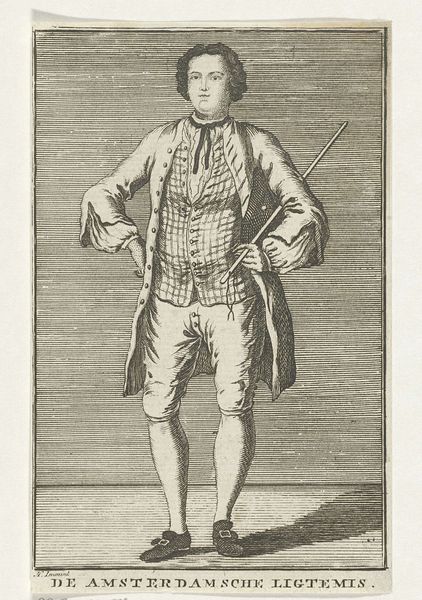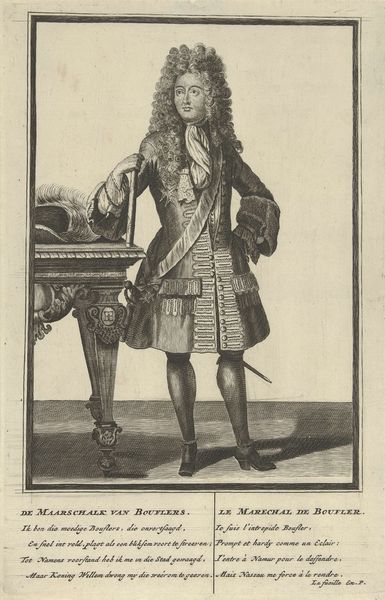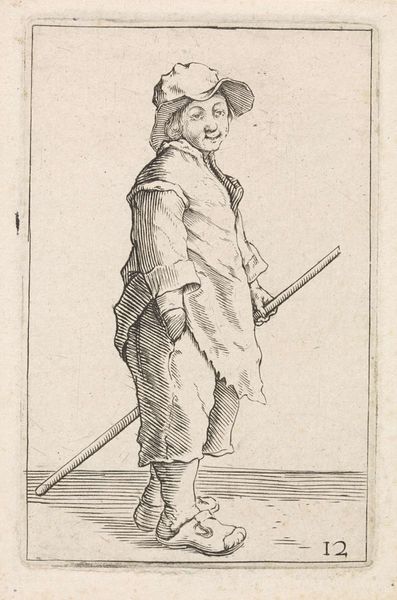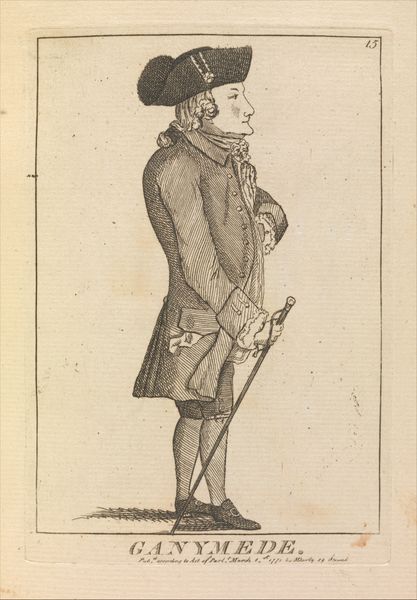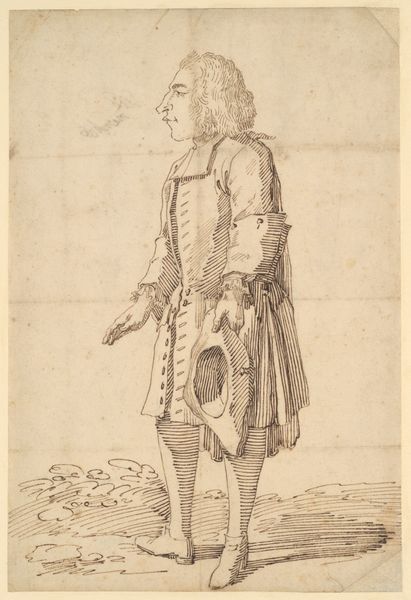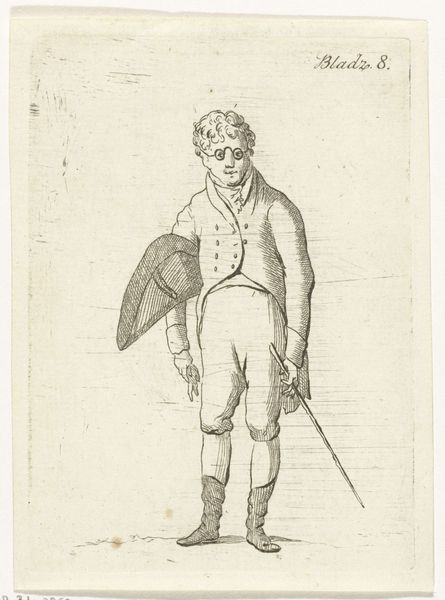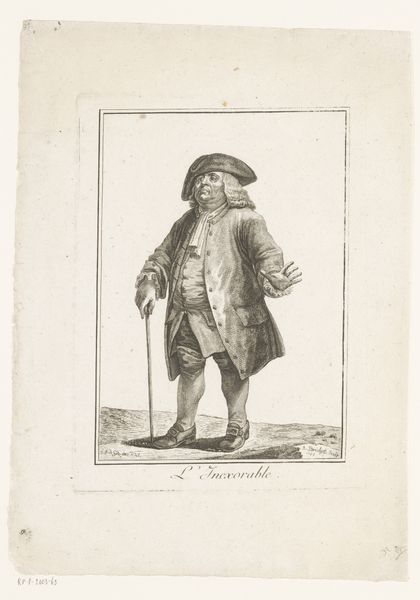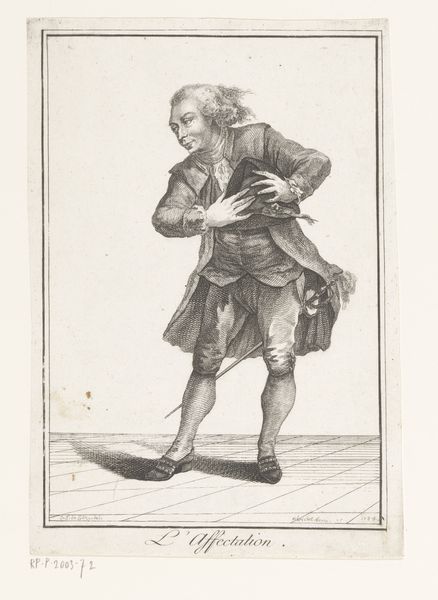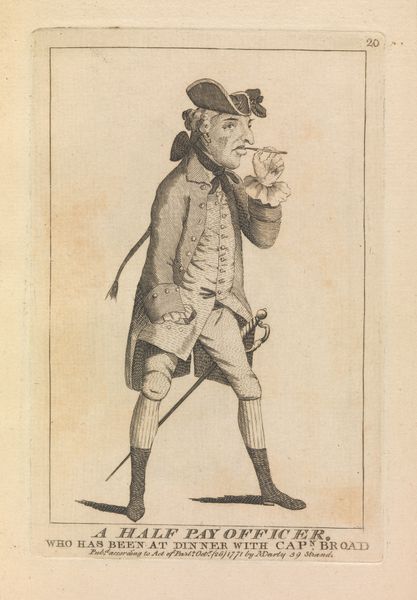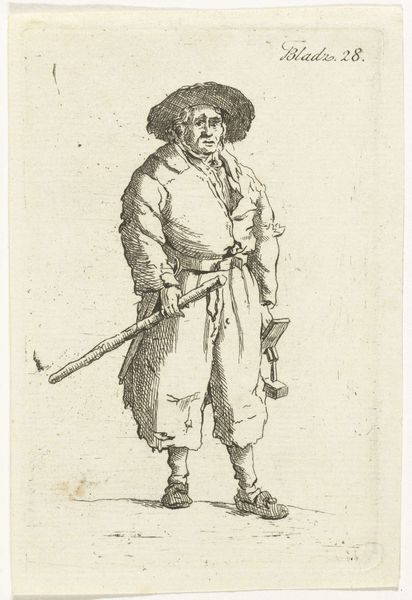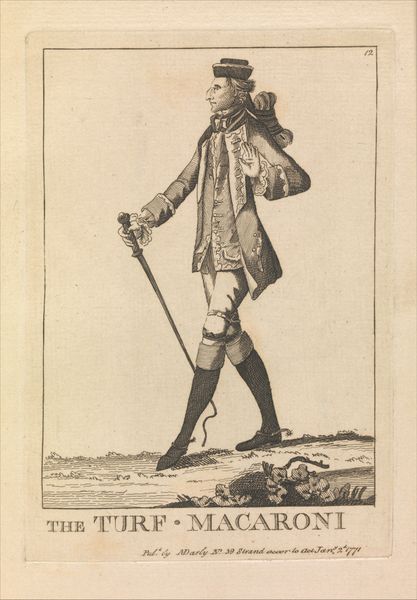
Dimensions: height 410 mm, width 306 mm
Copyright: Rijks Museum: Open Domain
Editor: This print, titled "Maarschalk," is from sometime between 1761 and 1804, and it’s attributed to Erven de Weduwe Jacobus van Egmont. It looks like an etching or engraving. The figure depicted seems proud but almost comically so. How do you interpret the imagery at play here? Curator: The image is brimming with carefully chosen symbols that tell a story far beyond the immediately visible. The baton, the star, the elaborate dress – each detail acts as a signifier of status, power, and perhaps aspiration. But do you notice a certain rigidity in the figure's pose and a slightly exaggerated quality in his features? Editor: Yes, definitely! He looks rather stiff. Almost like he's trying too hard. Curator: Precisely. That exaggeration, that slight distortion, points us to the tradition of caricature. This image taps into cultural anxieties about social mobility and the performance of power. The ‘Maarschalk’ is not just a portrait of a person, but a representation of societal tensions. What do you think the Carnival connection suggests? Editor: Carnival? Oh, right, the "Kermis-print" text... So, a temporary inversion of social norms, right? Implying the figure’s status is a bit of a performance or a joke? Curator: Exactly! And consider the relatively ephemeral nature of prints, particularly those associated with popular culture. It democratizes representation, making figures like this "Maarschalk" subject to public scrutiny and, perhaps, ridicule. Editor: I never thought about how the print medium itself contributed to the meaning! It’s like it brings him down from a high position. Curator: Indeed! Recognizing these visual symbols and understanding the cultural context unlocks so much more than just what we see on the surface. Editor: It really does! Now I see this print as less about an individual and more about the entire social structure. Thanks!
Comments
No comments
Be the first to comment and join the conversation on the ultimate creative platform.
